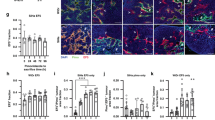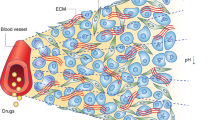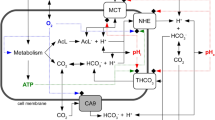Abstract
The Crabtree effect can be observed when the O2 consumption of tumour cells or of mammalian cells grown in culture is measured in physiological medium containing glucose. The effect of 2 hypoxic cell radiosensitizers, misonidazole and NDPP, on the O2 consumption of Ehrlich ascites tumour cells was compared in media with and without glucose. A stimulatory effect on O2 consumption was found for 5--20mM misonidazole as well as for 0.5mM NDPP, both in media containing 10(-2)M glucose. Thus glucose induced a Crabtree effect in Ehrlich tumour cells, expressed as 38--45% inhibition of O2 consumption relative to that in the same medium without glucose. The stimulatory effect of misonidazole and NDPP on O2 utilization in medium with glucose undoubtedly appeared as a release from the Crabtree effect.
This is a preview of subscription content, access via your institution
Access options
Subscribe to this journal
Receive 24 print issues and online access
$259.00 per year
only $10.79 per issue
Buy this article
- Purchase on Springer Link
- Instant access to full article PDF
Prices may be subject to local taxes which are calculated during checkout
Similar content being viewed by others
Rights and permissions
About this article
Cite this article
Mustea, I., Bara, A. Release from the Crabtree effect by hypoxic cell radiosensitizers. Br J Cancer 40, 295–299 (1979). https://doi.org/10.1038/bjc.1979.178
Issue Date:
DOI: https://doi.org/10.1038/bjc.1979.178
This article is cited by
-
Morphological changes in rat hepatocytes in primary culture induced by Misonidazole, desmethylmisonidazole and Ro 03-8799
Virchows Archiv B Cell Pathology Including Molecular Pathology (1984)



